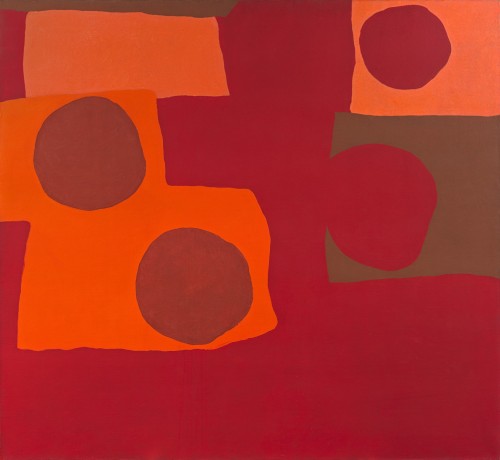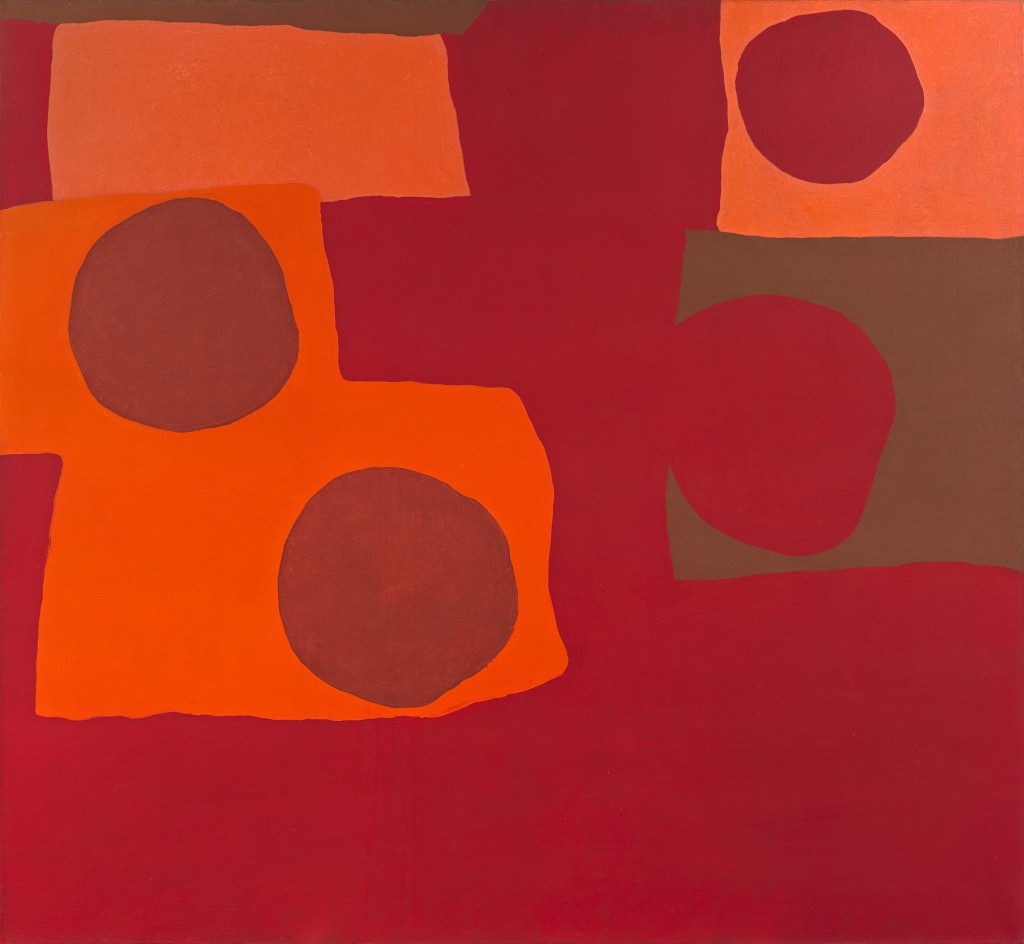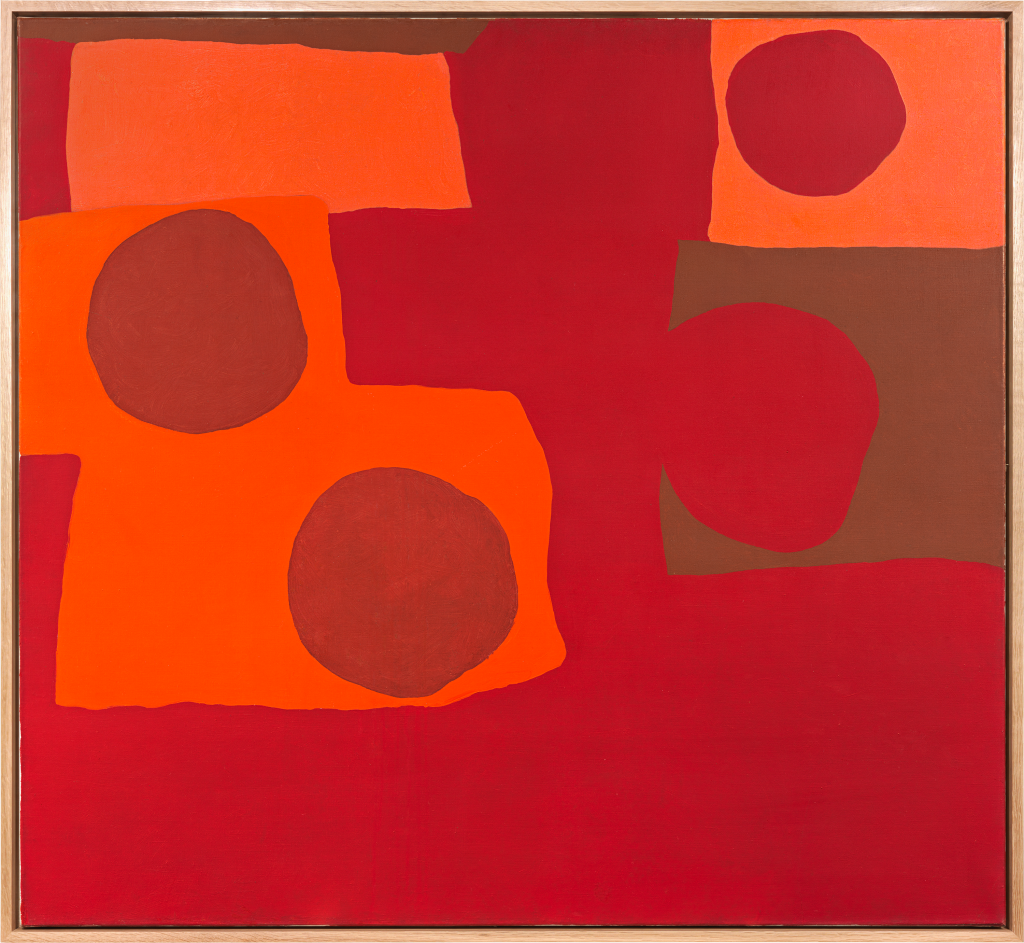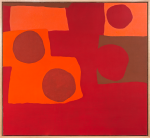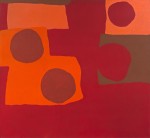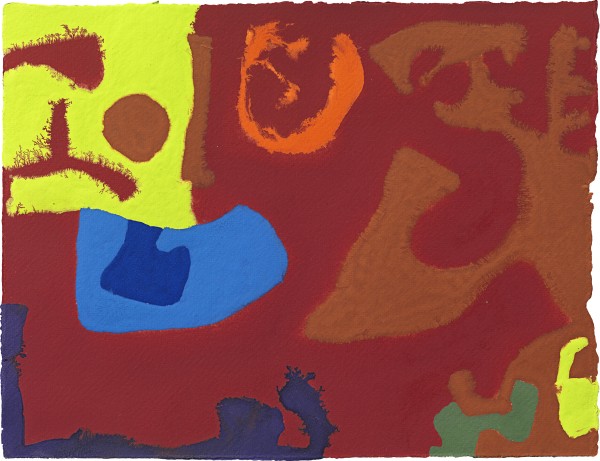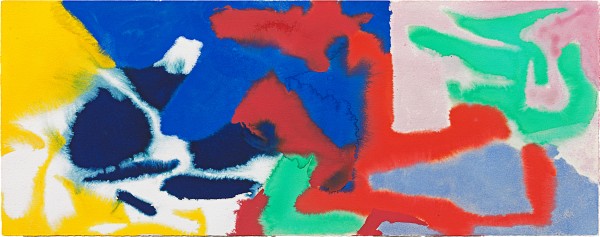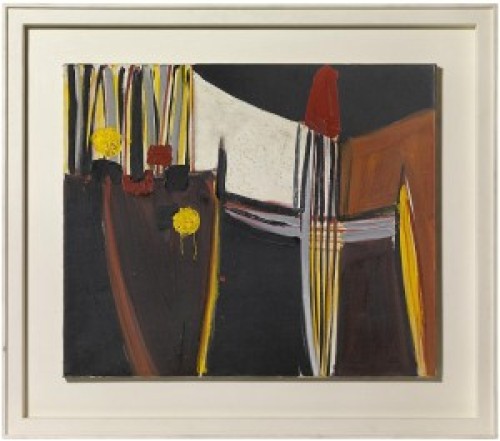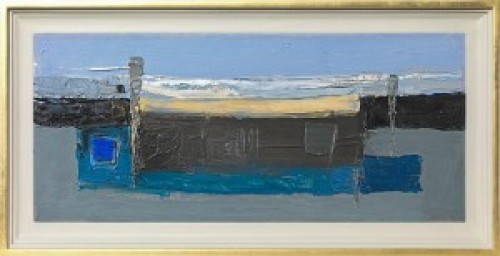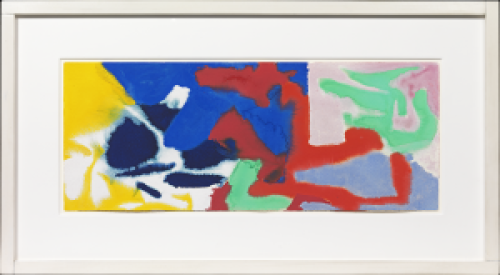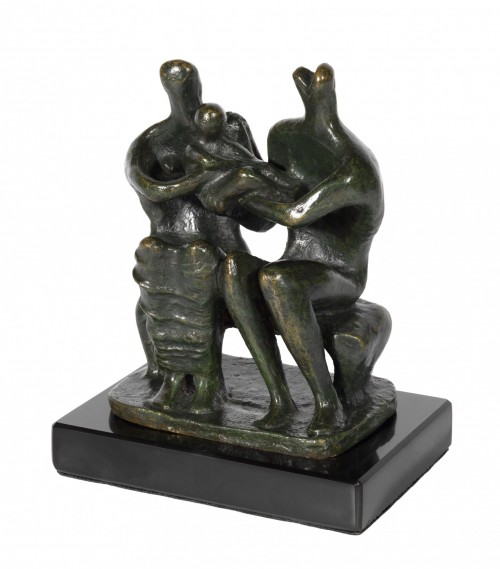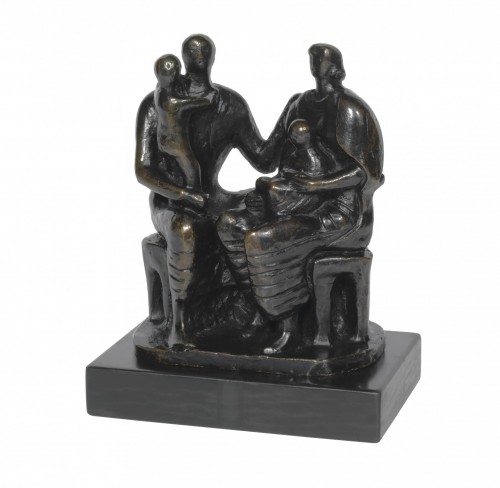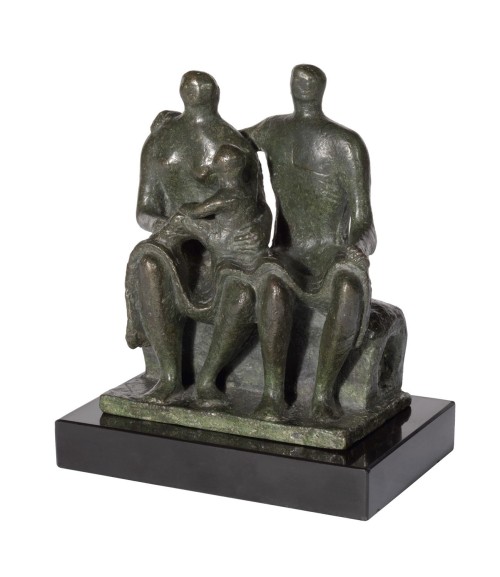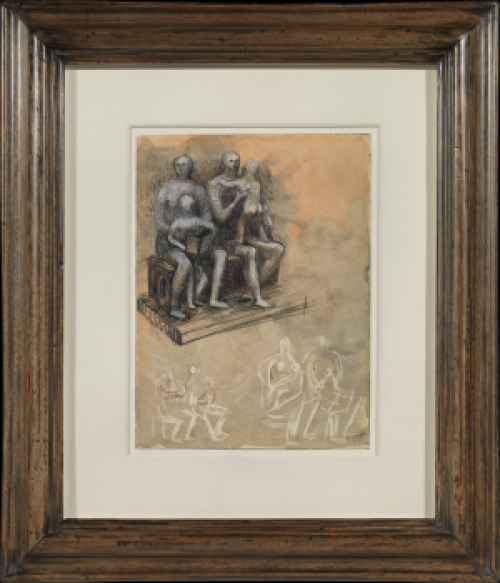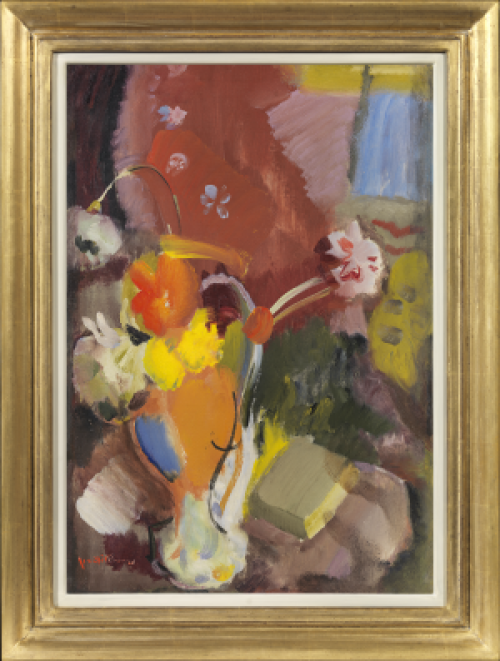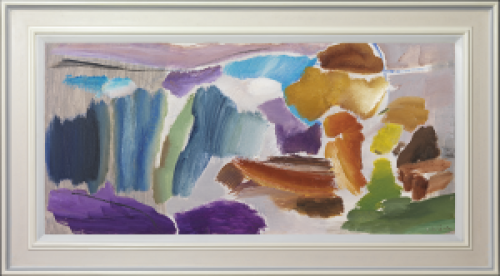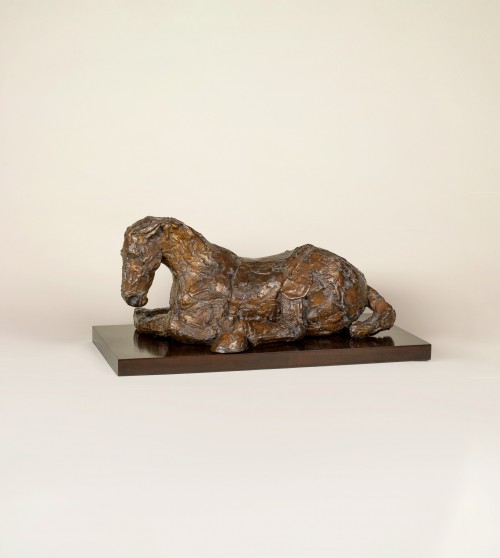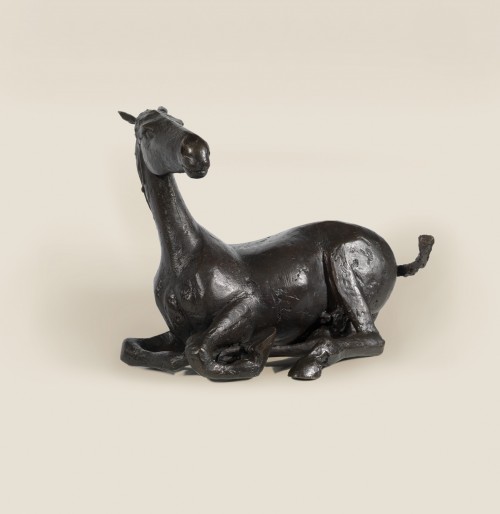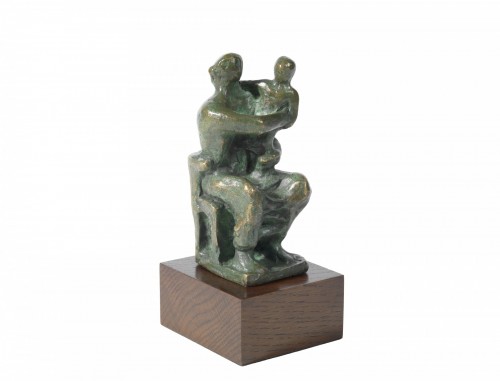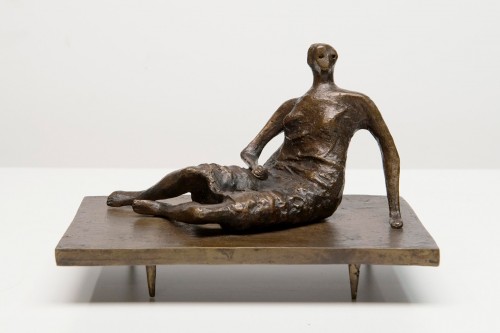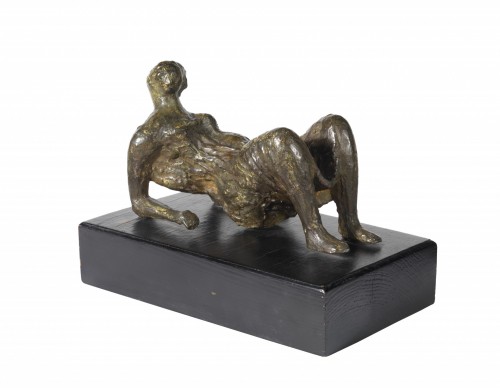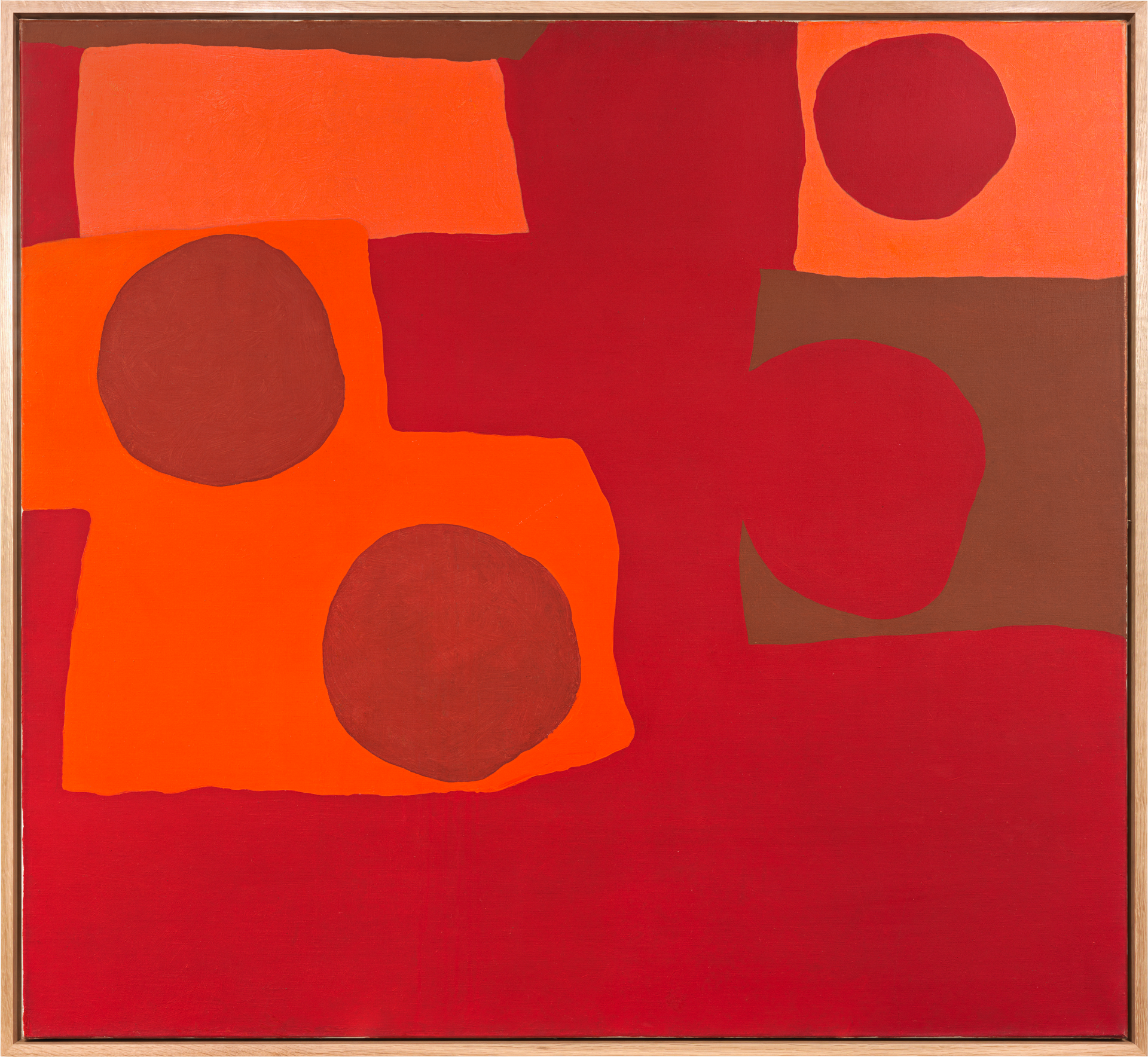PATRICK HERON
Headingley 1920 - 1999 Zennor
Ref: CC 216
Five Reds, Four Discs : May 1965
Signed, dated and inscribed on the reverse: PATRICK HERON / FIVE REDS / FOUR DISCS : MAY 1965
Oil on canvas: 48 x 52 in / 122 x 132 cm
Frame size: 50 x 54 in / 127 x 137.2 cm
Floated in a box-style polished frame
Provenance:
Private collection, via Waddington Galleries, London and Richard Demarco Gallery, Edinburgh, September 1966
Waddington Galleries, London, August 1967;
Edward Bond, Cambridge
Exhibited:
New York, Bertha Schaefer Gallery, Patrick Heron: New Oils, 4th-23rd October 1965, cat.no.9
Edinburgh, Richard Demarco Gallery, Inaugural Exhibition, August-September 1966, cat.no.73
This painting will be included in the forthcoming catalogue raisonné of Patrick Heron’s oil paintings, currently being prepared by Dr Andrew Wilson and Dr Robert Sutton
Searing large-scale, abstract compositions exploring shades of red are some of Patrick Heron’s most celebrated paintings of the 1960s, including Red Painting : July 25 1963 (Scottish National Gallery of Modern Art), Three Cadmiums : January-April 1966 (Yale Center for British Art) and Three Cadmiums, Four Discs : April 1966 (Government Art Collection). Four in Deep Cadmium, 1964, which Heron was photographed painting by Lord Snowdon for Private View: The Lively World of British Art, published in 1965, also shares a similar palette. In the accompanying text, John Russell writes: ‘Heron’s late paintings are all warmth: and the warmth speaks out for itself, with no reference to the identifiable world. Heron believes, in fact, that the investigation of colour – colour in itself, colour as form, colour as the maker and definer of space – is the only activity now open to a painter that is not in some way a retreat into the past.’[1]
In the same year that he painted the present work, Heron represented Great Britain with Victor Pasmore at the VIII Bienal de São Paulo, Brazil and was awarded a Silver Medal. While continuing to push the boundaries of his own painting practice, Heron championed the cause of British painters on the international stage in the face of American dominance, writing in 1966: ‘in Britain today there are not one but three generations of painters whose vitality, persistent energy, inventiveness and sheer sensibility is not equalled anywhere else in the world. Furthermore, these three generations are linked in an organic historical relationship...an absolutely essential condition for the emergence of major painting in any county.’[2]
This exceptional work was previously owned by another innovative cultural leader, the playwright, director and screenwriter, Edward Bond (1934-2024). The celebrated dramatist’s sensational play, Saved, was first staged at the Royal Court Theatre in London in 1965.
[1] Bryan Robertson, John Russell, Lord Snowdon, Private View: The Lively World of British Art, Thomas Nelson & Sons, London 1965, p.73.
[2] Patrick Heron, ‘The Ascendancy of London in the Sixties,’ Studio International, December 1966.

